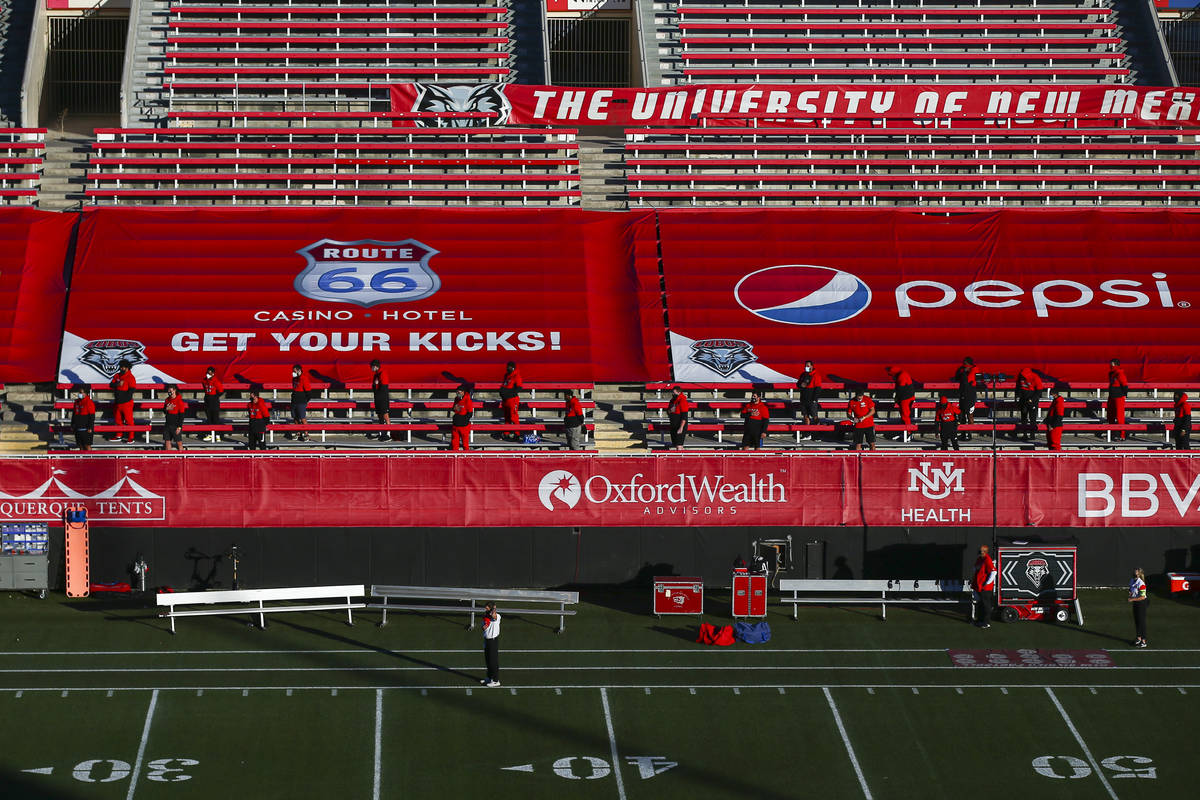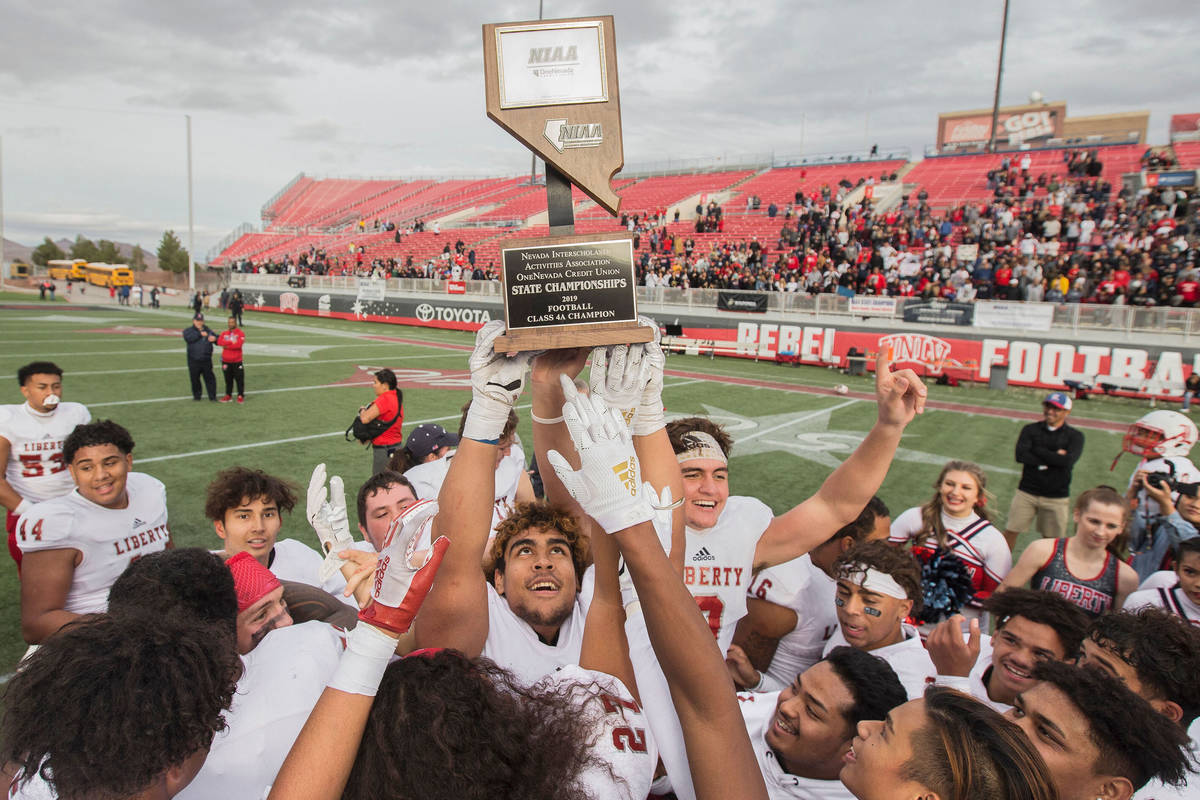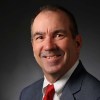Sam Boyd Stadium’s long farewell nearing end
Shortly before kickoff at the recent Mountain West Championship game, an announcement was made welcoming those in the press box to the final sporting event in Sam Boyd Stadium history.
“How many times have we heard that before?” a sportswriter said through his protective face covering.
More than a year after the stadium’s official going away party, the cynicism about there even being a final event at Sam Boyd is widespread and understandable.
Despite being written off and mothballed, Sam Boyd Stadium served as the home away from home for the New Mexico and San Jose State football teams during the COVID-19 pandemic. It was an afterlife that sparked speculation that padlocking the quaint facility on the outskirts of Las Vegas might have been premature or shortsighted.
But with UNLV having entered into a lucrative but restrictive time-share with the NFL’s Raiders at glitzy Allegiant Stadium, and everyone hoping the coronavirus will have run its course before kickoff of the 2021 season, it’s likely that Sam Boyd Stadium has taken its final bow.
“We were really glad that their student-athletes were able to have a season,” UNLV athletic director Desiree Reed-Francois said about offering New Mexico and San Jose State use of the idle stadium amid COVID-19 restrictions in their home states. “But candidly we kind of put Sam Boyd to rest (in 2019), and we’re going to return to no events.”
Let’s make a deal
In return for being allowed to play football in the Raiders’ opulent new palace in the shadow of the Strip, UNLV agreed to what is essentially a no-compete clause with its NFL big brother for sports, concerts and other events previously held at Sam Boyd Stadium
In return for shuttering Sam Boyd Stadium and paying the Raiders a per game rental fee, UNLV will receive annual compensation of up to $3.5 million over a 10-year period.
“That is the requirement; that was the deal among all the parties when the stadium legislation was drafted, ” said Jeremy Aguero, principal analyst for Applied Analysis and a Las Vegas Stadium Authority consultant. “UNLV, I suppose, could certainly keep Sam Boyd open, but it would put in jeopardy the revenues it would receive” from the payout.
Aguero stressed that while keeping Sam Boyd open contractually remains an option, “the deal among all the parties was clearly that Sam Boyd would close.”
So despite the recent flurry of football activity, the stadium’s future as a venue for live sports and entertainment hasn’t changed.
The UNLV administration will continue to evaluate options that ultimately will decide the fate of the aging but still serviceable 36,800-seat stadium, Reed-Francois said. They include selling the 70 acres that encompass the stadium area, swapping it for property closer to the university that could be developed or simply letting the stadium idle quietly until deciding how and when to proceed.
“Sam Boyd Stadium is a great asset, and our campus is evaluating how it fits into the master plan,” Reed-Francois said of analysis she expects will be completed this year.
Still standing for now
Sam Boyd Stadium opened in 1971 at a cost of $3.5 million that, allowing for inflation, translates to $22.5 million today. A $1.2 million renovation in 2015 added a press box tower, luxury suites and other improvements that greatly enhanced the stadium’s revenue-raising capability.
But the no-compete agreement with the Raiders pretty much has eliminated any practical use for the stadium, barring another health crisis or other unforeseen circumstance.
“The cost of maintaining it and firing it up would make no sense, especially if the events you are doing are smaller attended events,” said Pat Christenson, Las Vegas Events president and a former Sam Boyd Stadium and Thomas & Mack director.
“It goes counter to the agreement with the Raiders. Every time you try to do something you have to jump through hoops. Anything that’s competitive, anything of substance that is going to draw fans … the Raiders are going to do.”
Although the New Mexico and San Jose State football games and Mountain West championship game produced television exposure for the stadium and the city, they were played in front of empty grandstands eliminating any revenue-making potential.
“It’s not a money-maker, but we’re covering our expenses,” is how Reed-Francois described the arrangements with New Mexico and San Jose State that she said were more about being a good conference partner than generating money during what continues to be a desperate time for college athletics.
Soccer anyone?
Among the options if UNLV were to sell the property on which the stadium sits, Barry Barto, UNLV’s former soccer coach and a specialist in the school’s planning and construction department, said it would still be a viable option for Major League Soccer should the city eventually land a franchise.
“There are great (sight lines) in that stadium … and the stadium itself really has great bones,” said Barto, who doesn’t believe Sam Boyd’s edge-of-town location would be a major deterrent to an MLS owner.
“It’s not that easy to get to the arenas now if you’re in Summerlin or deep in Henderson. I would think you could put forward a reasonable amount of resources and dollars that would make it a quality (MLS) facility.”
Tim Jackson, Clark County School District athletic director, said he could envision Sam Boyd being reconfigured into a public high school football facility for games of the week or marquee matchups against out-of-state teams that would be worthy of television coverage.
“Two years ago we had some fields under construction and what we ended up doing is having three or four games on a Saturday out there,” Jackson said. “It was hugely successful. The kids loved it, we loved it, we would love to continue that.”
Youth baseball parks, soccer fields, a centerpiece for a sports or recreation complex, an outdoors rodeo arena should the National Finals outgrow the Thomas & Mack Center … the ideas for how to utilize Sam Boyd Stadium are almost as limitless as the views from the roof of the press box tower.
But the temporary home of the Hawaii Warriors? Don’t count on that one, Reed-Francois said.
When asked if Hawaii also had inquired about scheduling games in Las Vegas, where it has a huge following, after Aloha Stadium recently was condemned, the UNLV athletic director chuckled wryly.
“No, the University of Hawaii has not reached out.”
Contact Ron Kantowski at rkantowski@reviewjournal.com or 702-383-0352. Follow @ronkantowski on Twitter.
UNLV-Raiders deal
Highlights of UNLV's revenue offset agreement with the Las Vegas Stadium Authority as outlined in the Summary of Joint Use Agreement:
— UNLV has the ability to receive annual compensation payments of up to $3.5 million from the Stadium Authority to offset revenue streams previously available at Sam Boyd Stadium for a period of 10 years.
— In determining UNLV's eligibility for such payments, the Stadium Authority is required to consider the loss of net income from football and other events previously hosted by Sam Boyd Stadium and any increase in net income for UNLV generated from the use of Allegiant Stadium.



















